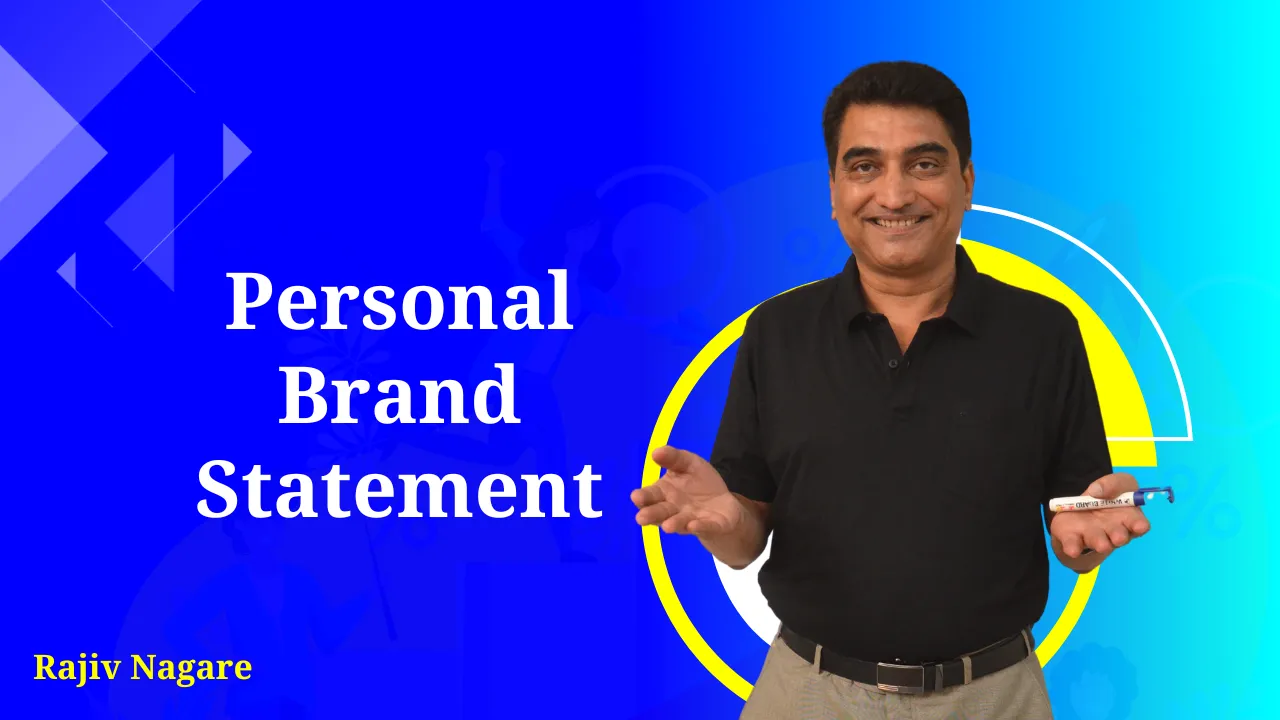Crafting a Personal Brand Statement: A Comprehensive Guide
Definition of a Personal Brand Statement
A personal brand statement is a concise, clear expression of who you are, what you offer, and how you differentiate yourself from others. It communicates your unique value proposition (UVP) in both personal and professional spheres. Think of it as a one- or two-sentence summary that answers the question: "Why should someone choose you?"

Importance of Having a Personal Brand Statement in Personal and Professional Development
In today’s competitive job market and fast-paced digital landscape, personal branding has become more crucial than ever. A well-crafted personal brand statement sets you apart from the crowd, enhances your visibility, and positions you as a thought leader or expert in your field. Whether you’re networking, job searching, or simply growing your career, a strong personal brand statement can open doors and elevate your opportunities.
Overview of the Article's Objectives
This article will guide you through the concept of personal branding, break down the key components of a personal brand statement, and provide actionable steps to create your own. By the end, you'll have practical insights and tips to craft a statement that reflects your values, professional goals, and unique strengths.
Understanding Personal Branding
What is Personal Branding?
Personal branding refers to the practice of marketing yourself—your skills, experiences, and personality—as a cohesive brand. Just like companies build a brand to attract customers, individuals can create a personal brand to attract opportunities, whether it’s a new job, partnership, or a promotion.
The Impact of Personal Branding on Career Growth
Your personal brand is your reputation. It influences how others perceive you and can directly impact your career advancement. A well-established personal brand demonstrates consistency, expertise, and professionalism, allowing you to build trust within your industry and among your peers.
Key Elements of Personal Branding
Key elements of personal branding include your expertise, values, personality, and vision. Together, these form a coherent identity that people recognize and associate with your name. To establish a successful personal brand, it’s crucial to communicate these elements clearly across all professional platforms, from LinkedIn profiles to personal websites.
Components of a Personal Brand Statement
Unique Value Proposition (UVP)
Your unique value proposition (UVP) is the core of your personal brand statement. It explains what makes you different from others in your field.
- Importance of Knowing Your Strengths: To craft your UVP, you must first identify your strengths. What skills, experiences, or qualities set you apart?
- How to Articulate Your UVP: Be specific. Avoid vague phrases like "hard worker" or "team player." Instead, focus on what you deliver that’s unique—whether it’s a technical skill, creative insight, or problem-solving ability.
Target Audience
Your personal brand statement should be designed with a specific audience in mind.
- Identifying Who You Aim to Reach: Who do you want to attract with your brand statement? Is it hiring managers, potential clients, or collaborators? Clearly define your target audience before you start writing.
- Tailoring Your Message Accordingly: Once you know your audience, tailor your statement to address their needs and expectations. For example, if you’re in IT, your audience may value innovation and technical expertise, so highlight those aspects.
Professional Goals and Values
Align your personal brand statement with your long-term professional goals.
- Aligning Your Statement with Your Career Aspirations: Your brand statement should reflect where you want to go in your career. If you’re aiming for a leadership role, emphasize your management experience or leadership qualities.
- Reflecting Your Core Values: Values like integrity, creativity, or innovation can be powerful elements of your personal brand. Integrating your values into your statement makes it authentic and relatable.
Steps to Crafting Your Personal Brand Statement
Self-Assessment
Before you start drafting, take time for self-assessment.
- Reflection on Personal Experiences, Skills, and Passions: Reflect on your career journey, your strengths, and what you’re passionate about. Your personal brand statement should align with your authentic self.
- Gathering Feedback from Peers and Mentors: Ask others how they perceive you. Sometimes, peers or mentors can provide insights that you may overlook, giving you a clearer understanding of your strengths and weaknesses.
Drafting Your Statement
With a self-assessment in hand, you’re ready to draft your personal brand statement.
- Writing a Draft Based on Insights Gained: Begin writing a draft that includes your UVP, target audience, and professional goals. Focus on clarity and conciseness; your statement should be no longer than a few sentences.
- The Importance of Clarity and Conciseness: Avoid jargon or overly complicated language. A personal brand statement is most effective when it’s easy to understand and to the point.
Revision and Refinement
Once you have a draft, it’s time to revise and improve.
- Seeking Constructive Criticism: Share your draft with trusted colleagues, friends, or mentors. Ask for honest feedback on whether your statement truly reflects your brand.
- Iterating Until the Statement Feels Authentic and Effective: Personal branding is an ongoing process. Continue refining your statement until it feels right and resonates with both you and your audience.
Practical Tips for Enhancing Your Personal Brand Statement
Incorporating Storytelling Techniques
Storytelling can make your personal brand statement more engaging.
- Using Narratives to Create Emotional Connections: People connect with stories. Including a short narrative about how you overcame a challenge or achieved success can make your statement memorable and impactful.
Tailoring for Different Contexts
Your personal brand statement should be adaptable.
- Modifying the Statement for Resumes, LinkedIn, and Networking Events: While the core message of your statement remains consistent, you can tweak it to fit different contexts. For example, your LinkedIn profile may need a longer version, while a networking event calls for a brief elevator pitch.
Visual and Digital Representation
Your brand statement should extend to your digital presence.
- Enhancing Your Statement Through Visuals and Online Presence: Your online profiles, websites, and even business cards should visually reflect your personal brand. Consistency in colors, fonts, and design elements reinforces your brand identity.
Recap of the Key Points Covered
Crafting a personal brand statement is a powerful way to define your professional identity, communicate your value, and reach your career goals. By understanding the key components—UVP, target audience, and professional goals—and following the steps to craft and refine your statement, you’ll be well on your way to creating a strong personal brand.
Encouragement to Invest Time in Crafting a Personal Brand Statement
A personal brand statement is more than just a sentence; it’s a representation of who you are. Take the time to reflect, draft, and refine your statement to ensure it’s both authentic and impactful.
Comment below with your thoughts, and let's start a conversation















